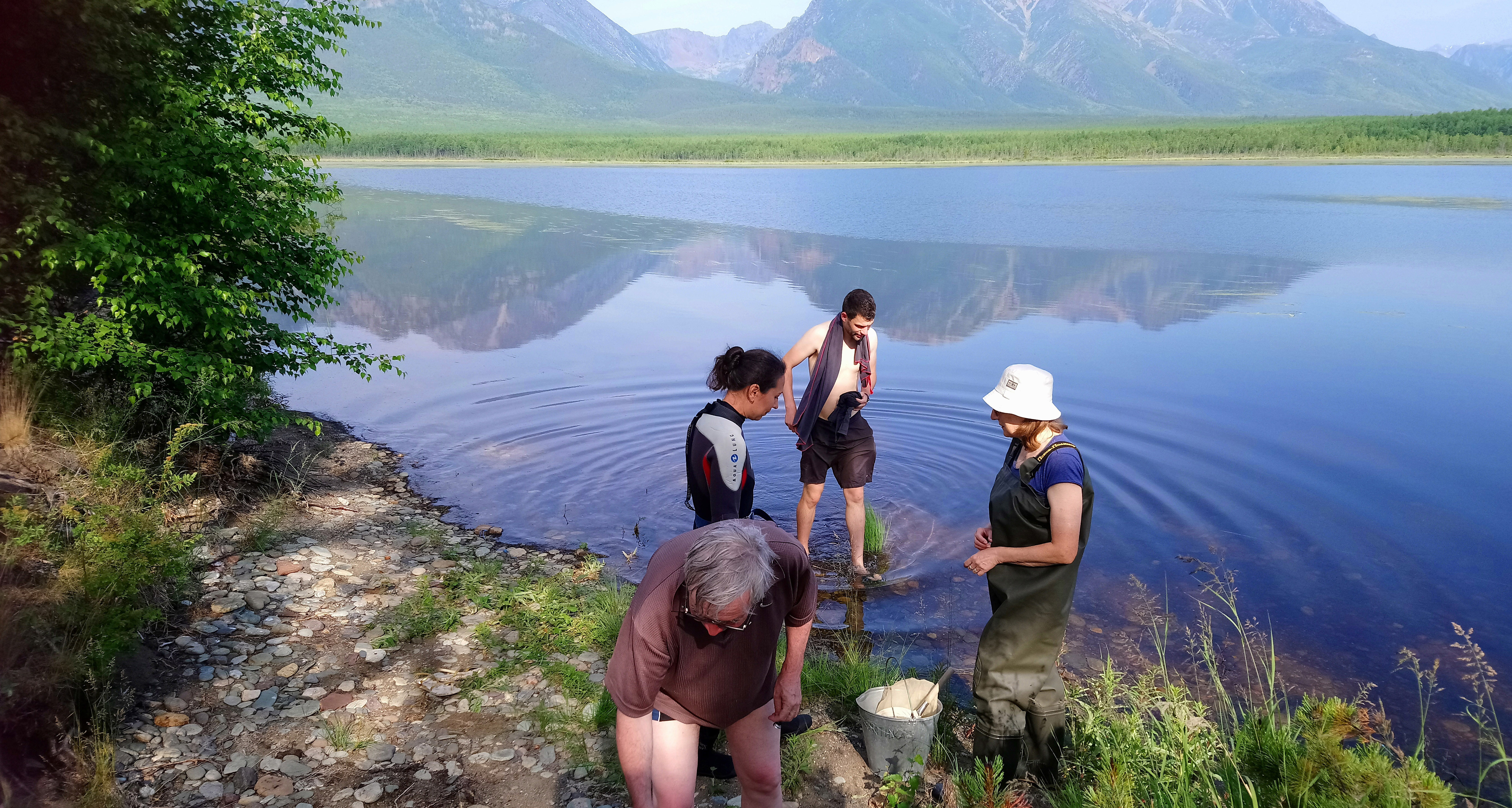Expedition onboard RV “G. Titov”, July 22-August 01, 2019
The expedition within the framework of the programs “Complex Study of Evolutionary Processes in Benthic Organisms under Abrupt Changes of Ecosystem of Lake Baikal” and “Molecular Ecology and the Evolution of Living Systems of Central Asia in the Context of Global Environmental Changes” was carried out onboard RV “G. Titov”, July 22-August 01, 2019 throughout the water area of Lake Baikal.
The aim of the expedition was to collect material for biodiversity assessment and study of the speciation process on the example of the representatives of cosmopolitan and endemic invertebrates from Lake Baikal.
The fieldworks were completely fulfilled. In total, 30 sites were investigated in 20 areas of Lake Baikal at depths of 1.5-12, 10-30 and 200-250 m. During the expedition, samples of green algae and their associate microeukaryotes were taken, considering vertical zonality in the distribution of algae in Lake Baikal at depths from 0 to 10 m, from areas with different anthropogenic impact (reference areas: Khara-Murin, Boro-Elga and Onokochanskaya; areas with anthropogenic impact: Kultuk and Maksimikha). In reference areas of Khara-Murin and Onokchanskaya, there were filaments of the members of the genus Spirogyra. The bulk of algae was typical Baikal flora, – Draparnaldiodes, Cladophora, Tetraspora, etc. In the course of the expedition, approximately 400 DNA samples were extracted for subsequent metagenomic analysis by the rbcL and ITS2 markers to investigate the taxonomic composition of algal and fungal communities from Lake Baikal.
Chironomids (Paratanytarsus), trichopterans, molluscs, and hydras were collected from the littoral zone of Lake Baikal to study phylogenetic relationships and population structures of Baikal hydrobionts.
Benjamin Wilden, a graduate student from Bielefeld University (Germany), involved in the project on the analysis of benthic organisms in four ancient and deep lakes: Baikal, Ohrid, Malawi, and Titicaca, participated in the expedition. He sampled bottom sediments from the profundal and coastal zones of Lake Baikal to accurately characterize the dominant nematode species by molecular methods and search for common taxa in the structure of benthic communities from the four ancient lakes.





